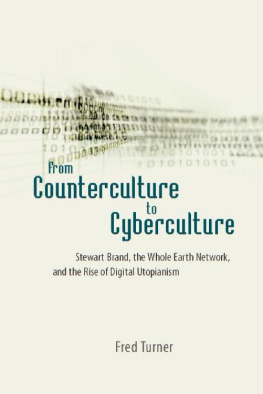
Seeing Silicon Valley
Life inside a Fraying America
Photographs and StoriesMary Beth Meehan
EssayFred Turner
The University of Chicago Press / Chicago / London
The University of Chicago Press, Chicago, 60637
The University of Chicago Press, Ltd., London
2021 by Mary Beth Meehan and Fred Turner
All rights reserved. No part of this book may be used or reproduced in any manner whatsoever without written permission, except in the case of brief quotations in critical articles and reviews.
For more information, contact
The University of Chicago Press,
1427 E. 60th St., Chicago, IL 60637.
Published 2021
Printed in Italy
30 29 28 27 26 25 24 23 22 21 1 2 3 4 5
ISBN-13: 978-0-226-78648-3 (paper)
ISBN-13: 978-0-226-78651-3 (e-book)
DOI: https://doi.org/10.7208/chicago/9780226786513.001.0001
First published in French as Visages de la Silicon Valleyby C&F ditions, 2018.
All images by Mary Beth Meehan
Frontispiece: Getting dressed for a workers rights rally, San Jose.
Book design by Lucinda Hitchcock
Typefaces used: Greta Text by Peter Bilak;
Fakt by Thomas Thiemich; Dala Floda by Paul Barnes
Library of Congress Control Number: 2020039791
This book is printed on acid-free paper.
Contents
Fred Turner
Mary Beth Meehan

Middlefield Road, Redwood City
The Valley on the HillFred Turner
For the last fifty years,Silicon Valley has been shrouded in myth. Its laptops and cell phones have glittered with the promise of a glorious technology-enabled future. Its entrepreneurs and venture capitalists have seemed to stride the heights of creativity and individualism. Steve Jobs, Mark Zuckerberg, Apple, Google, Facebook, Teslafor years, these names alone have conjured visions of extraordinary wealth, egalitarian opportunity, and universal access to the products of Americas most cutting-edge industries.
Today that mythology is beginning to dissolve, but only just. People around the world continue to imagine Silicon Valley as a kind of American utopia. Like the Pilgrims who sailed across the Atlantic in the 1600s, technologists and entrepreneurs still travel to the valley from around the globe. They may fly or drive, but their sense of mission and their search for profits is as old as America itself. In 1630, Puritan minister John Winthrop famously addressed his flock as they sailed toward the New World: We must consider that we shall be as a city upon a hill, he told them. The eyes of all people are upon us. He could as easily have been speaking to a planeload of engineers landing in San Francisco.
Because the valley still conjures up such visions, we need to try to see it as it is. Who lives here, and how? Silicon Valley has long been a shining example for those who dream of a society built around individual initiative and enabling technologies. But what does it feel like to live in such a world? What kind of society does the relentless pursuit of technological innovation and wealth produce? And what kind of future does it suggest for the rest of us?
Some of the answers lie hidden in the land. Unless you live here or visit, chances are you wont know the green hills that run up the ocean side of the San Francisco Peninsula, nor will you recognize the flatlands that melt into the mud of the San Francisco Bay. What we call Silicon Valley stretches between the bay and the hills from the city of San Jose in the south to San Francisco in the north. Until Spanish missionaries arrived in the late eighteenth century, it was inhabited primarily by native Ohlone peoples, tens of thousands of whom were ultimately massacred and enslaved.





